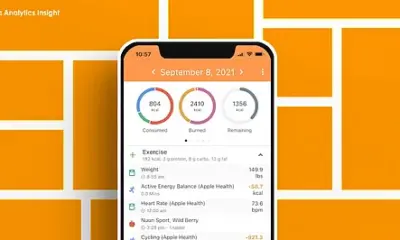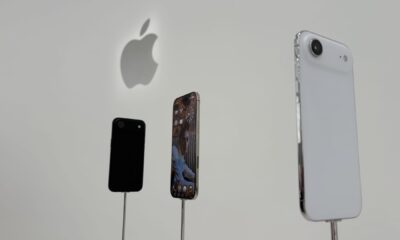Health
New Wearable Hydration Monitor Aims to Prevent Heatstroke

A new wearable hydration monitor developed by researchers at the University of Texas at Austin could significantly reduce the risk of heat-related illnesses such as heatstroke. This non-invasive device continuously measures hydration levels and sends real-time data to a smartphone, allowing users to stay aware of their hydration needs. According to a report by SWNS, the sensor’s capabilities could be especially beneficial for individuals who engage in outdoor activities or those with chronic health conditions.
Professor Nanshu Lu, who led the study, emphasized the importance of hydration, stating, “Dehydration is a silent threat that affects millions of people every day.” The wearable sensor offers a proactive solution, enabling users to monitor their hydration status conveniently and effectively. By doing so, individuals can take necessary actions to maintain their health and performance levels.
Understanding the Technology Behind the Sensor
The hydration monitor employs a technique known as bioimpedance. This method involves sending a small, safe electrical current through the body using strategically placed electrodes. The flow of this current varies based on the hydration level of the tissues; hydrated tissues allow the current to pass easily, while dehydrated tissues resist the flow.
Dr. Matija Jankovic, a post-doctoral researcher in Professor Lu’s lab, noted, “Arm bioimpedance is not only sensitive to hydration changes but also aligns closely with whole-body hydration measurements.” This capability makes the sensor a reliable tool for tracking hydration during daily activities, such as walking or exercising.
To validate the effectiveness of the device, the research team conducted multiple experiments, including a diuretic-induced dehydration study. Participants were administered medication to promote fluid loss, and their hydration levels were monitored using the wearable device. The results showed a strong correlation between the changes in arm bioimpedance and total body water loss, as detailed in their findings published in the Proceedings of the National Academy of Sciences.
Potential Applications and Future Developments
The new sensor presents a promising alternative to traditional hydration tracking methods, which often involve invasive procedures like urine or blood analysis. Such methods can be time-consuming and impractical for everyday use. Researchers aim to make hydration monitoring accessible to a broader audience, particularly individuals with chronic dehydration, kidney disease, or heart conditions. Athletes could also benefit from this technology, especially during intense physical activity in hot weather.
While the current model tracks relative hydration changes, Professor Lu expressed aspirations to develop reference data for absolute hydration levels. The team is also exploring advanced wearable formats, including breathable electronic tattoos and sweat-absorbing patches, to enhance user comfort over extended periods.
“This is just the beginning,” Professor Lu remarked, highlighting the team’s commitment to making simple hydration monitoring available to everyone. With this innovative approach to hydration monitoring, the researchers hope to empower individuals to take control of their health and well-being.
As hydration plays a crucial role in regulating body temperature, maintaining organ function, and supporting vital processes, the implications of this technology could be far-reaching. Even mild dehydration can impair concentration and performance, while severe cases may lead to serious health issues like heatstroke and kidney stones. This new device may indeed pave the way for improved health outcomes across various demographics.
-

 Technology5 months ago
Technology5 months agoDiscover the Top 10 Calorie Counting Apps of 2025
-

 Technology3 weeks ago
Technology3 weeks agoOpenAI to Implement Age Verification for ChatGPT by December 2025
-

 Health3 months ago
Health3 months agoBella Hadid Shares Health Update After Treatment for Lyme Disease
-

 Health4 months ago
Health4 months agoAnalysts Project Stronger Growth for Apple’s iPhone 17 Lineup
-

 Health4 months ago
Health4 months agoErin Bates Shares Recovery Update Following Sepsis Complications
-

 Technology5 months ago
Technology5 months agoDiscover How to Reverse Image Search Using ChatGPT Effortlessly
-

 Technology3 months ago
Technology3 months agoElectric Moto Influencer Surronster Arrested in Tijuana
-

 Technology5 months ago
Technology5 months agoMeta Initiates $60B AI Data Center Expansion, Starting in Ohio
-

 Technology2 months ago
Technology2 months agoDiscover 2025’s Top GPUs for Exceptional 4K Gaming Performance
-

 Technology5 months ago
Technology5 months agoRecovering a Suspended TikTok Account: A Step-by-Step Guide
-

 Health5 months ago
Health5 months agoTested: Rab Firewall Mountain Jacket Survives Harsh Conditions
-

 Lifestyle5 months ago
Lifestyle5 months agoBelton Family Reunites After Daughter Survives Hill Country Floods





















